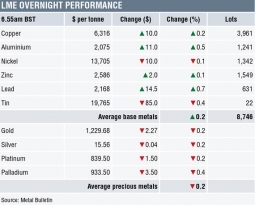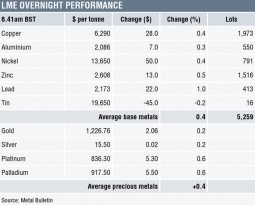The spot gold price sank to a seven-week low during Asian morning trading on Monday October 2 as the dollar rebounded.
The spot gold price was quoted at $1,274.95-1,275.30 per oz as of 04:56 BST, down $5.25 on the previous session’s close. Trade has ranged from $1,274.20-1,278.75 so far today, of which the low was the lowest since August 16.
- The dollar index rebounded on Monday morning as the Euro came under pressure following the violence-marred Catalan referendum in Spain – latest news cited Catalan officials as saying some 90% of voters had voted for independence while hundreds were injured following clashes between the police and voters.
- The dollar is expected to remain supported on increased expectations of the USA raising interest rates in December, market observers said.
- “US yields and the dollar are clearly the primary drivers of the gold prices at the moment…Bullish traders will now be nervously eyeing the 100-day moving average just below at $1,272.45 for some relief. A break here opening a move lower to the August lows and the 200-day moving average at $1,250,” Jeffrey Halley, senior market analyst at Oanda, said.
Silver, PGMs
- In the other precious metals, the spot silver price fell $0.015 to $16.59-16.61 per oz. Platinum increased $3 to $909-914 per oz while palladium was also up $3 at $934-939 per oz.
- There is no trading on the Shanghai Futures Exchange as Chinese markets are closed from October 2-6 due to China’s week-long National Day holiday.
Currency moves and data releases
- The dollar index was up 0.29% to 93.34 as of 04:43 BST after reaching as high as 93.38 earlier in the day – this is the highest since September 28.
- In other commodities, the Brent crude oil spot price fell 0.26% to $56.59 per barrel as of 04:52 BST.
- In data released on Saturday, China’s official manufacturing purchasing managers’ index (PMI) for September came in at 52.4, above forecast of 51.5 and August’s reading of 51.7 – the September print was the highest since April 2012.
- Noting that new orders were the key driver for the manufacturing PMI, “this was the first time new orders beat output this year, suggesting a potential ‘excess demand’ to some extent. It also provides upside risk for Q3 GDP and our forecast of 6.7% for 2017,” said ANZ Research on Monday morning.
- The Caixin manufacturing PMI for September came in at 51 on Saturday, below the expected 51.5 and August’s reading of 51.6. The official PMI is more focused on large state-owned firms, while the independently surveyed Caixin PMI is closely watched for conditions among the country’s private sector. A PMI reading of above 50 reading signifies expansion, and below, contraction.
- China’s official non-manufacturing PMI for September came in at 55.4, above August’s reading of 53.4.
- China’s central bank said on Saturday that it would cut the reserve requirement ratio –which is the amount of cash that some banks must hold as reserves – for the first time since February 2016 so as to encourage lending to small business and the agricultural sector.
- In US data on Friday, the Chicago PMI exceeded expectations in September with a 65.2 reading, above estimates of 58.5. Personal spending and income in August were both in line with estimates at 0.1% and 0.2%, respectively. The revised University of Michigan consumer sentiment disappointed at 95.1, below the forecast of 95.3. Revised inflation expectations came in at 2.7%.
- Economic data due later today includes final manufacturing PMI, ISM manufacturing PMI, construction spending, ISM manufacturing prices from the USA and manufacturing PMI from the UK.
The post Gold sinks to seven-week low as dollar rebounds appeared first on The Bullion Desk.
Read More
Source: Bullion Desk News








